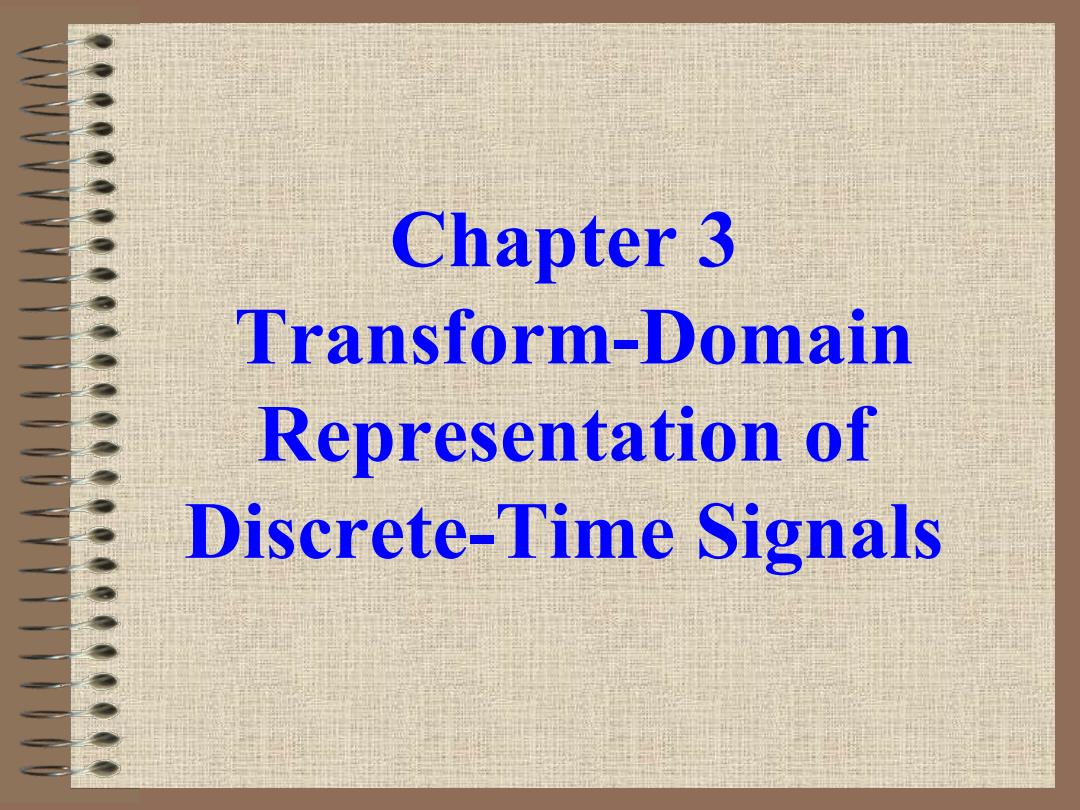
Chapter 3 Transform-Domain Representation of Discrete-Time Signals
Chapter 3 Transform-Domain Representation of Discrete-Time Signals
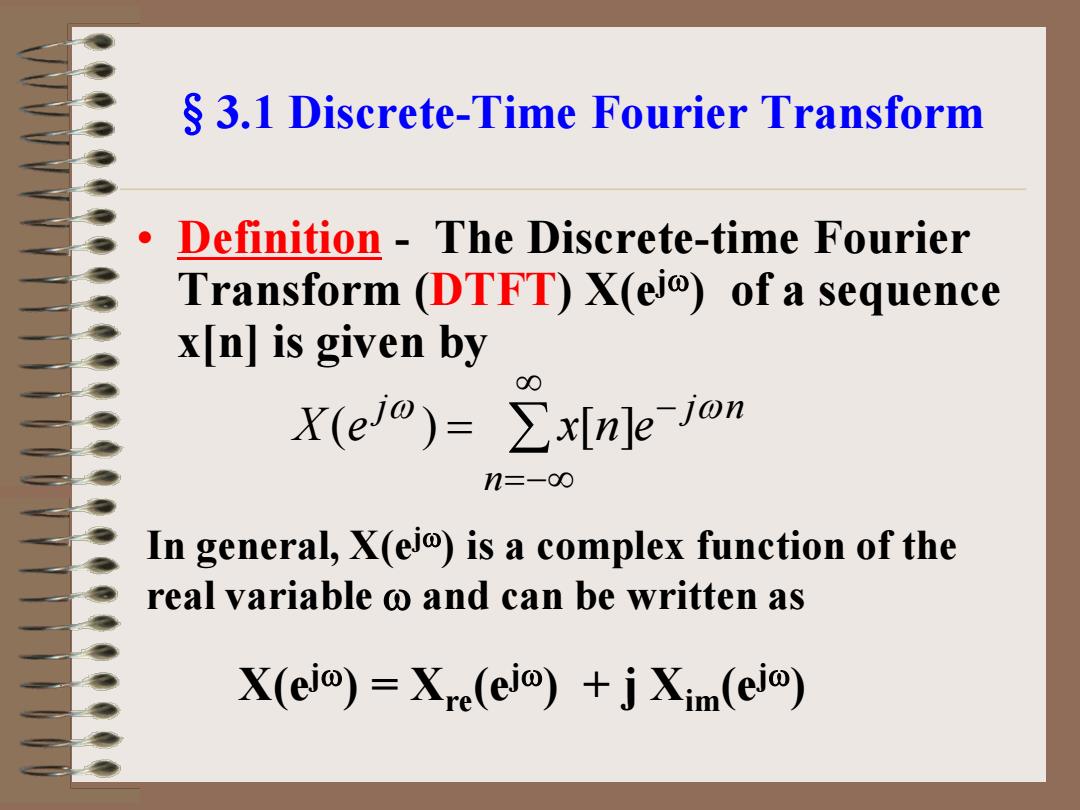
S 3.1 Discrete-Time Fourier Transform Definition The Discrete-time Fourier Transform (DTFT)X(ei)of a sequence x[n]is given by X(eo)=∑x[nle-jon n=-∞ In general,X(ei)is a complex function of the real variable o and can be written as X(ei)=Xre(ei)+jXim(ei)
§3.1 Discrete-Time Fourier Transform • Definition - The Discrete-time Fourier Transform (DTFT) X(ejω) of a sequence x[n] is given by ∑ ∞ =−∞ − = n j j n X e x n e ω ω ( ) [ ] X(ejω) = Xre(ejω) + j Xim(ejω) In general, X(ejω) is a complex function of the real variable ω and can be written as
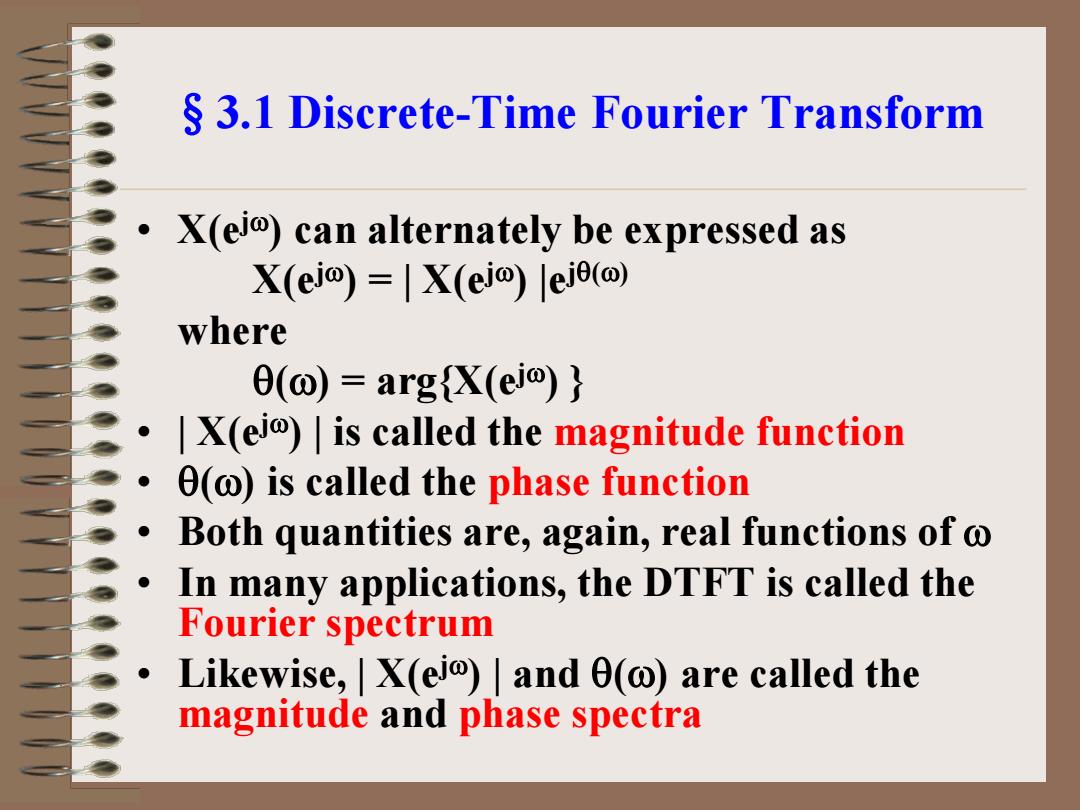
3.1 Discrete-Time Fourier Transform X(ei)can alternately be expressed as X(ei)=X(ei)ei() where ()argx(ei)} X(ei)is called the magnitude function 0()is called the phase function Both quantities are,again,real functions of o In many applications,the DTFT is called the Fourier spectrum Likewise,X(ei)|and 0(@)are called the magnitude and phase spectra
§3.1 Discrete-Time Fourier Transform • X(ejω) can alternately be expressed as X(ejω) = | X(ejω) |ejθ(ω) where θ(ω) = arg{X(ejω) } • | X(ejω) | is called the magnitude function • θ(ω) is called the phase function • Both quantities are, again, real functions of ω • In many applications, the DTFT is called the Fourier spectrum • Likewise, | X(ejω) | and θ(ω) are called the magnitude and phase spectra
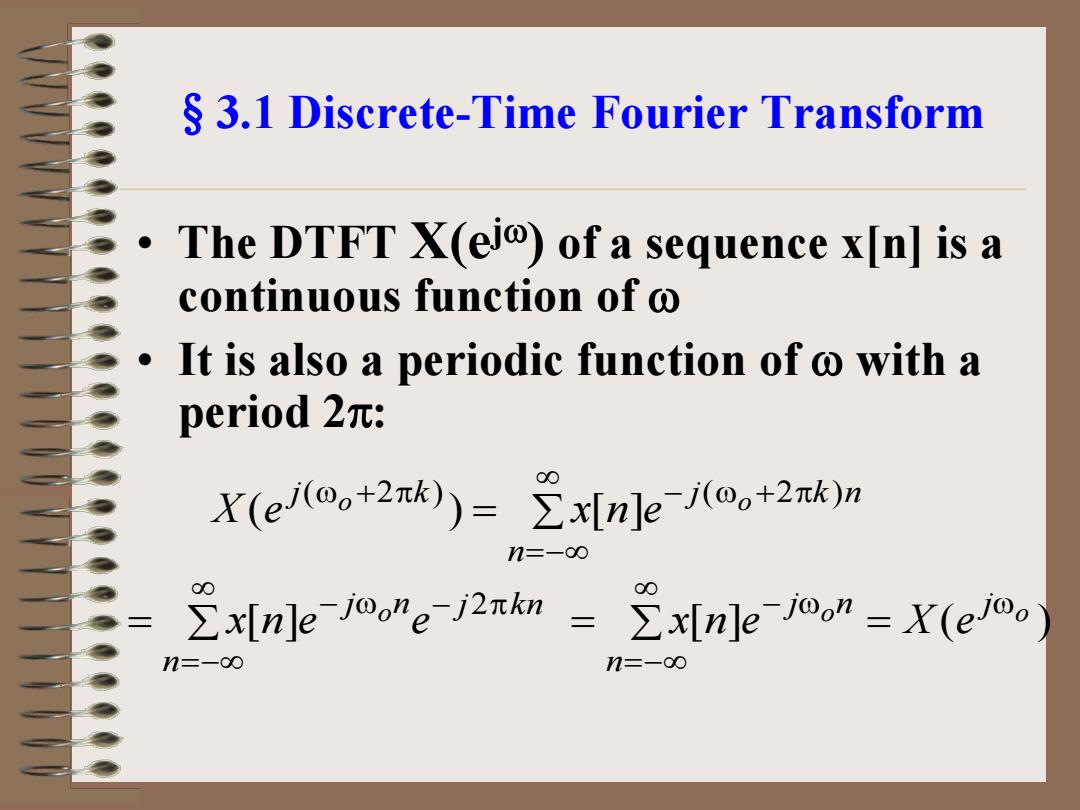
S 3.1 Discrete-Time Fourier Transform The DTFT X(ei)of a sequence x[n]is a continuous function of It is also a periodic function of o with a period2π: X(eo+2xk))=xnle-j(0o+2rk)n 2 x[nJe-j”eJ2πkm=2x[n]]e-Jo"=X(e/oo n=-o
§3.1 Discrete-Time Fourier Transform • The DTFT X(ejω) of a sequence x[n] is a continuous function of ω • It is also a periodic function of ω with a period 2π: = ∑ ∞ =−∞ ω + π − ω + π n j o k j o k n X e x n e ( 2 ) ( 2 ) ( ) [ ] j kn n j n x n e e o − π ∞ =−∞ − ω = ∑ 2 [ ] [ ] ( ) o o j n j n x n e X e ω ∞ =−∞ − ω = ∑ =
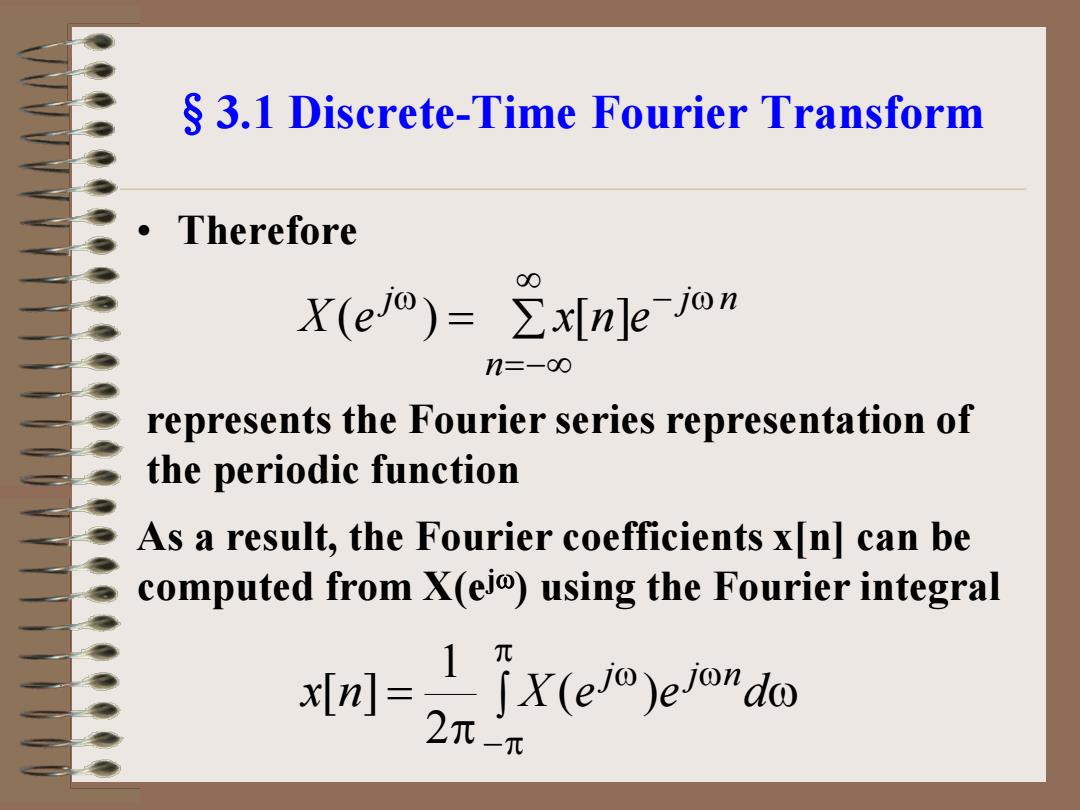
3.1 Discrete-Time Fourier Transform Therefore X(ef)=xInle-jon n=-o0 represents the Fourier series representation of the periodic function As a result,the Fourier coefficients x[n]can be computed from X(ei)using the Fourier integral al2iemema
§3.1 Discrete-Time Fourier Transform • Therefore = ∑ ∞ =−∞ ω − ω n j j n X (e ) x[n]e ∫ ω π = π −π ω ω x n X e e d j j n ( ) 2 1 [ ] As a result, the Fourier coefficients x[n] can be computed from X(ejω) using the Fourier integral represents the Fourier series representation of the periodic function
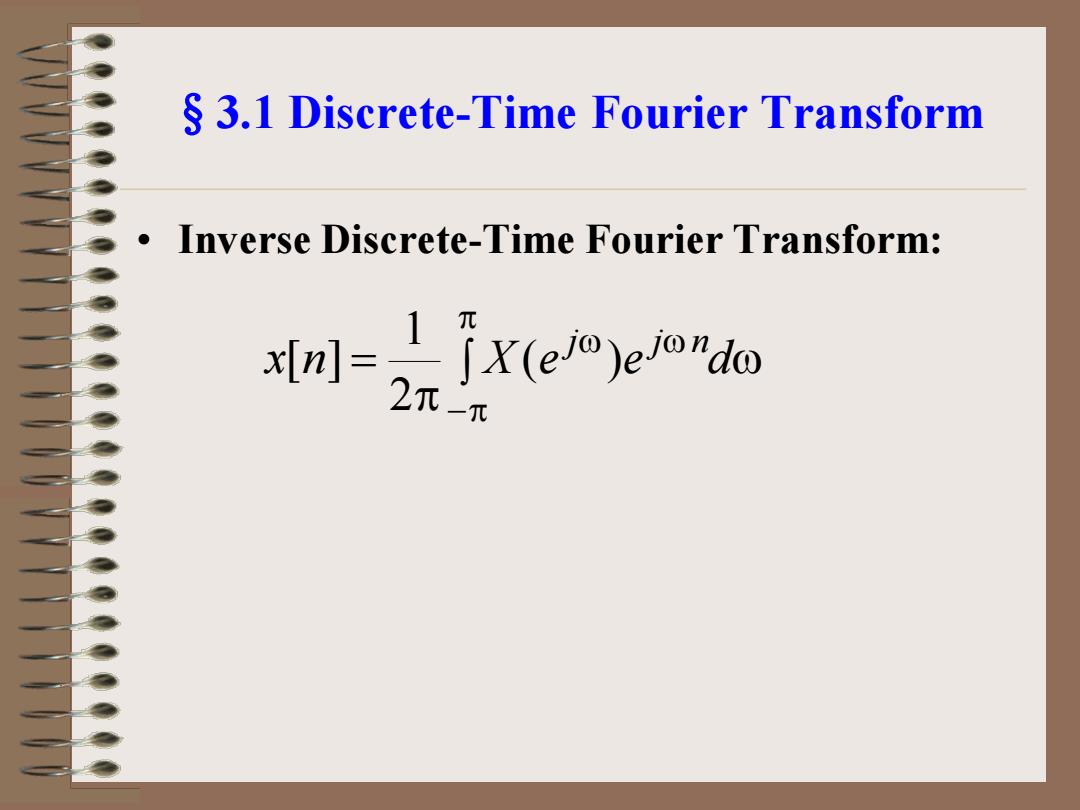
3.1 Discrete-Time Fourier Transform Inverse Discrete-Time Fourier Transform: ]-X(el)eordo
§3.1 Discrete-Time Fourier Transform • Inverse Discrete-Time Fourier Transform: ∫ ω π = π −π ω ω x n X e e d j j n ( ) 2 1 [ ]
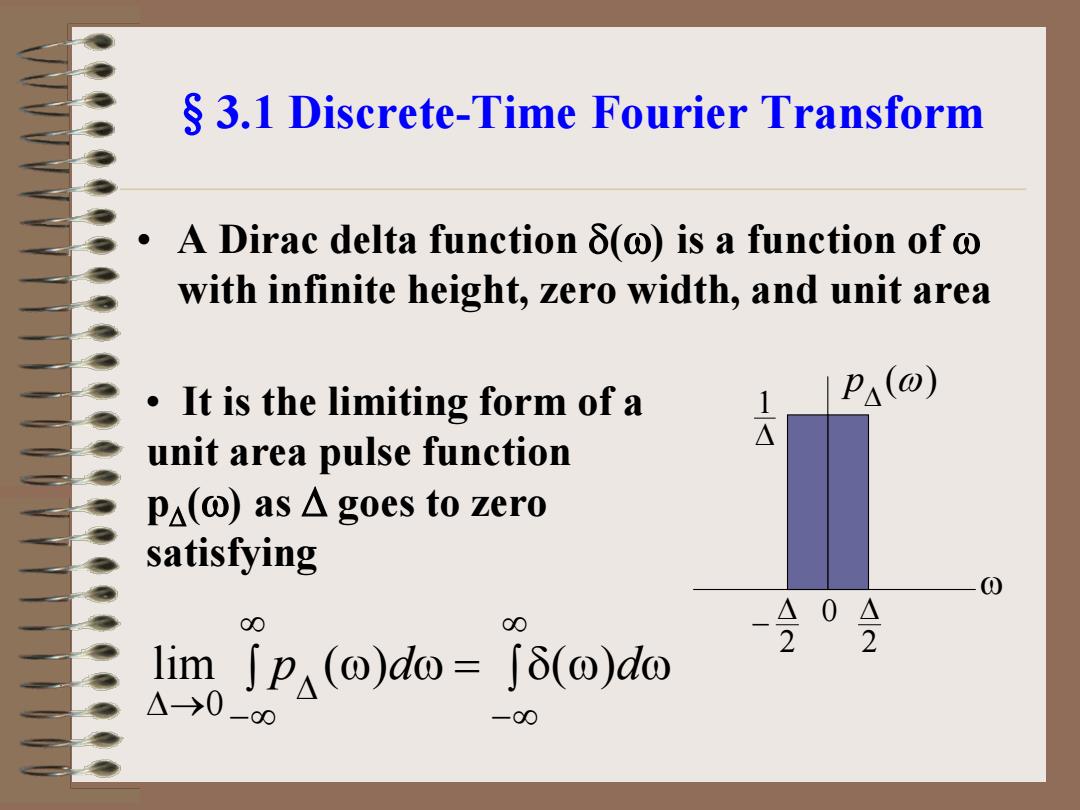
3.1 Discrete-Time Fourier Transform A Dirac delta function 8(@)is a function of o with infinite height,zero width,and unit area It is the limiting form of a P4() unit area pulse function Pa(o)as△goes to zero satisfying 0 0 00 2 △2 lim ∫p4(o)do=∫δ(o)do →0
§3.1 Discrete-Time Fourier Transform • A Dirac delta function δ(ω) is a function of ω with infinite height, zero width, and unit area ∫ ω ω = ∫ δ ω ω ∞ −∞ ∞ −∞ → ∆ ∆ lim p ( )d ( )d 0 ω 2 ∆ − 2 0 ∆ ∆ 1 (ω) ∆p • It is the limiting form of a unit area pulse function p∆(ω) as ∆ goes to zero satisfying

3.1 Discrete-Time Fourier Transform The function X(eo)=∑2πδ(o-0,+2元k) k=-00 is a periodic function of o with a period 2 and is called a periodic impulse train or impulse train
§3.1 Discrete-Time Fourier Transform is a periodic function of ω with a period 2π and is called a periodic impulse train or impulse train = ∑ πδ ω−ω + π ∞ =−∞ ω k o j X (e ) 2 ( 2 k) • The function

Commonly Used DTFT Pairs Sequence DTFT [n] ←> 1 1 > ∑2πδ(Q+2元k) k=-00 00 > ∑2πδ(0-0,+2πk) k=-00 1 00 K> +∑πδ(O+2πk) 1-e-jo k=-00 1 a"4nl,(<1) 1-ae-jo
Commonly Used DTFT Pairs Sequence DTFT δ[n] ↔ 1 ↔ ∑ πδ ω+ π ∞ k=−∞ 1 2 ( 2 k) ↔ ∑ πδ ω−ω + π ∞ =−∞ ω k o j n e k o 2 ( 2 ) + ∑πδ ω+ π − µ ↔ ∞ =−∞ − ω k j k e n ( 2 ) 1 1 [ ] ω α α µ α j n e n − − < ↔ 1 1 [ ], ( 1)
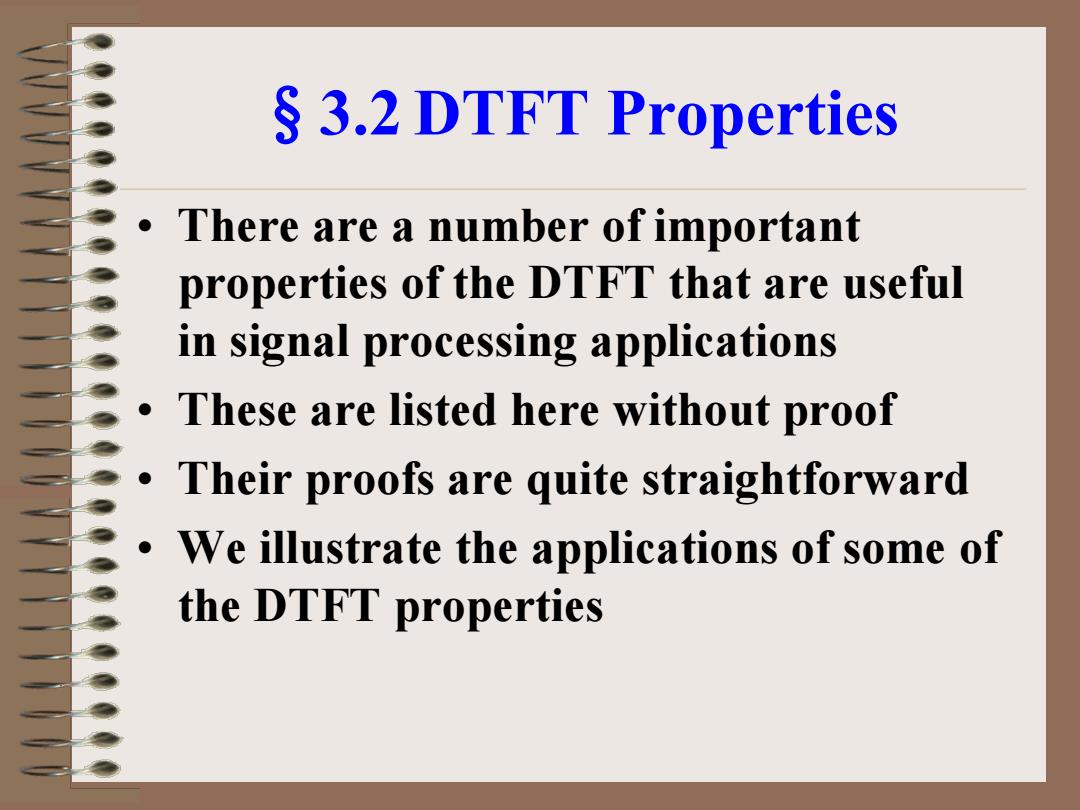
§3.2 DTFT Properties There are a number of important properties of the DTFT that are useful in signal processing applications These are listed here without proof Their proofs are quite straightforward We illustrate the applications of some of the DTFT properties
§3.2 DTFT Properties • There are a number of important properties of the DTFT that are useful in signal processing applications • These are listed here without proof • Their proofs are quite straightforward • We illustrate the applications of some of the DTFT properties